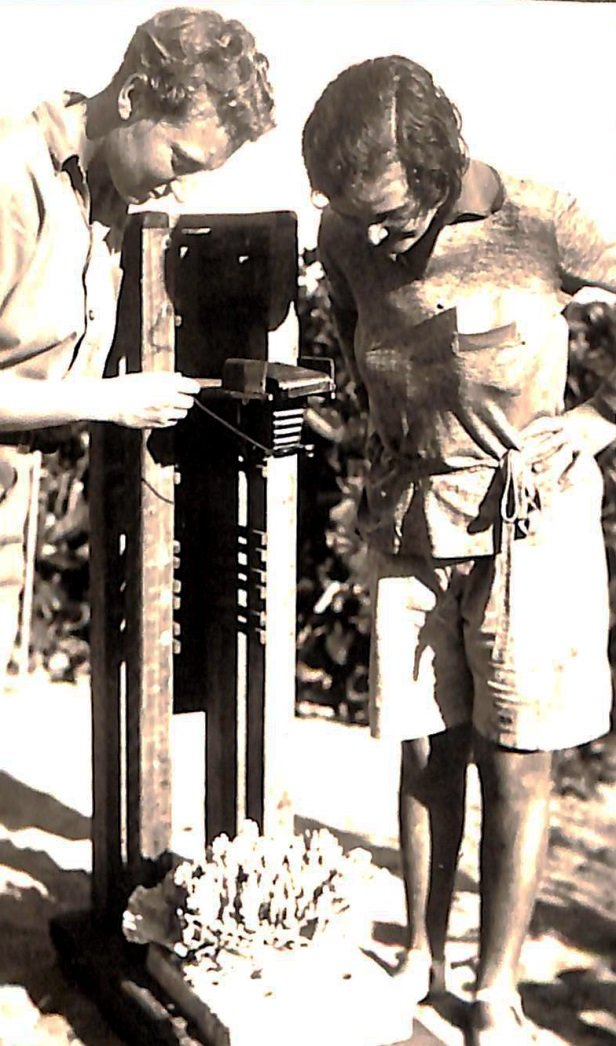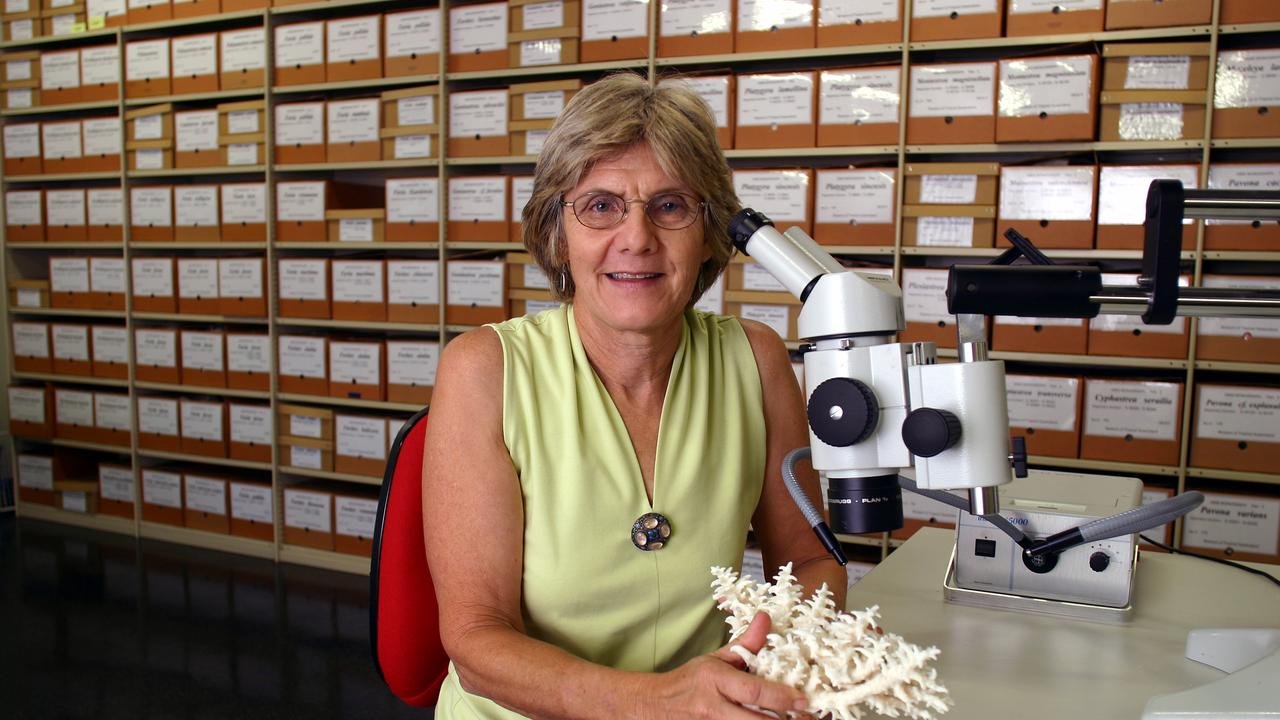Ever wonder about the ‘herstory’ of science?
In our recent paper we outline the remarkable contributions of ten outstanding women to Australian coral reef science:
Sidnie Manton (Zoologist) 1902-1979
Undertook the first ever detailed underwater ecological surveys of an Australian coral reef, establishing coral species and community records that are critical today for tracking changes to Australian reefs.
Figure 1: Manton reproduced with kind permission from the Manton family’s archives.
Sheina Marshall (phytoplankton) 1896-1977
Discovered how corals survive by removing sediments from themselves in turbid environments and established that corals spawn as a response to lunar cycles.
Figure 2: Sheina Marshall (left) demonstrating the apparatus for measuring coral growth on Low Isles to Mattie Yonge (right). Reproduced by kind permission of Scottish Association of Marine Science from Sheina Marshall’s photograph album of the Great Barrier Reef Expedition.
Anne Stephenson (Zoologist) 1899-1977
Surveyed and identified coral reef biological communities as a basis for understanding the geographical structure and ecology of reef platforms, making many hand drawn images and art works of reef organisms along the way.
Figure 3: Anne Stephenson assisting with field mapping. Reproduced with kind permission from the Manton family’s archives.
Dorothy Hill (geologist) 1907-1997
Established worldwide terminology for describing fossil corals, worked on material from Heron Island and Michaelmas bores, Dated and mapped stratigraphic sequences for coral limestone faunas.
Figure 4: Dorothy Hill working in the field, Queensland 1930. Fryer Library Photograph Collection, University of Queensland, Brisbane.
Isobel Bennett (Zoologist) 1909-2008
Published key books on Australian coastal and marine biology, including the landmark ‘Australian Seashores’, inspiring a generation of marine biologists with her engaging facts and underwater photographs.
Figure 5: Isobel Bennett aboard Te Vega during the Indian Ocean expedition. Photo: Michael Hadfield, University of Hawaii.
Loisette Marsh (Echinoderm taxonomist) 1928-2021
Made the earliest coral reef fauna collections in WA, documenting distributions of biota for establishing many Marine Parks in these isolated regions.
Figure 6: Loisette Marsh writing up notes after a day in the field at Scott reef, WA. Photo Clay Bryce, copyright West Australian Museum.
Patricia Mather (Ascidian systematist) 1925-2012
Spoke out against destructive mining in the Royal Commission for Exploration on the GBR, recommended the establishment of the Australian Institute of Marine Science and established key standards for Ascidian taxonomy.
Figure 7: Patricia Mather in her office at the Queensland Museum. February 1981. Copyright Queensland Museum, Brisbane.
Vicki Harriott (coral reef ecologist) 1955-2005
Made early observations of coral bleaching at Lizard Island, unravelled Latitudinal gradients in coral recruitment, advised on the sustainability of the Queensland Coral Fishery.
Figure 8: Vicki Harriott preparing for a dive. Photographer Lyle Vail taken at Lizard Island during her PhD studies in the early 1980s.
Carden Wallace (coral systematist)
Established worldwide standards for staghorn coral taxonomy and discovered mass coral spawning.
Figure 9: Carden Wallace examining Acropora samples from the Kimberleys at the Western Australian Museum.
Bette Willis (coral reef ecologist)
Revealed the Implications of mass spawning for reef connectivity, mapped larval dispersal and coral Morphological variations along latitudinal gradients and uncovered links between coral disease and ocean warming.
Figure 10: Bette Willis. Photo courtesy of Centre of Excellence, James Cook University.
Making the remarkable scientific achievements of these women visible subverts their absence from much of the recorded history of coral reef science and enables them to act as role models for the next generation of female scientists.









